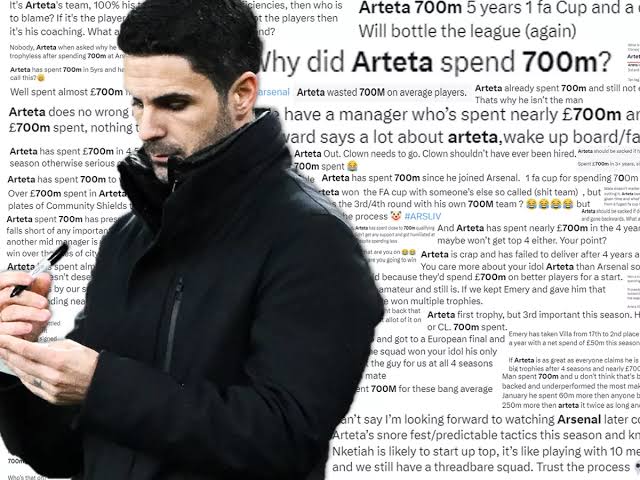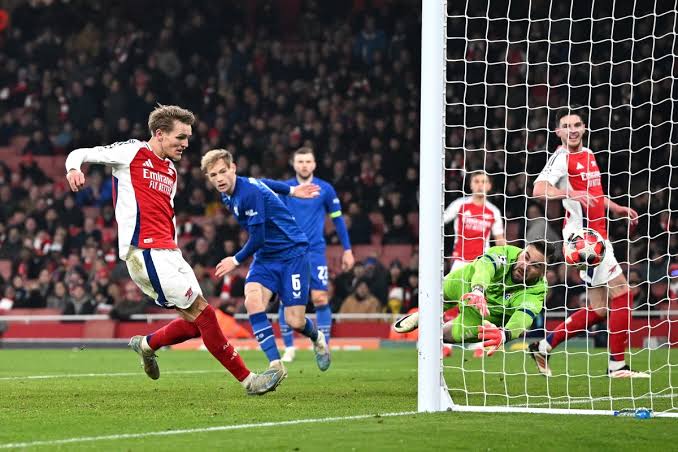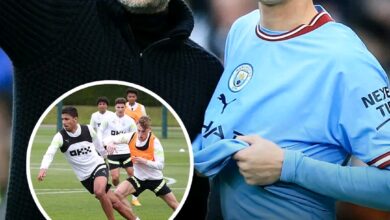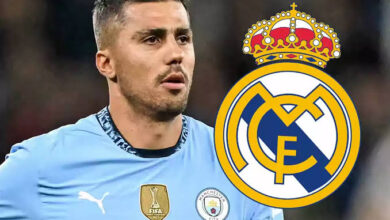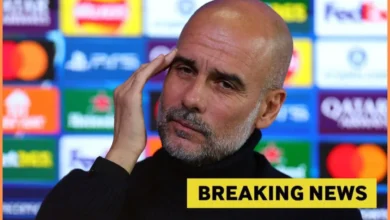Arsenal’s Perfect Transfer Window: Sesko Deal, Surprise Signings, and Summer Overhaul

Arsenal Football Club stands at a pivotal crossroads as the summer transfer window enters its crucial phase. With Mikel Arteta’s ambitious project entering its fifth year, the Gunners are poised for what could be their most transformative transfer window in recent memory. The departure of four senior players and the appointment of Andrea Berta as sporting director signals a new chapter in Arsenal’s evolution from promising challengers to genuine title contenders.
The confirmation of Arsenal’s released list has set the tone for a summer of significant change. Kieran Tierney, Jorginho, Neto, and Raheem Sterling’s departures represent more than just squad reduction – they symbolize Arteta’s ruthless pursuit of the perfect blend of youth, experience, and tactical flexibility. These releases, alongside 13 young players, create both financial flexibility and squad spaces that Berta and Arteta can strategically fill.
Kieran Tierney’s departure marks the end of an era for a player who once embodied Arsenal’s fighting spirit. The Scottish left-back’s injury-prone recent seasons and the emergence of alternatives have made his exit inevitable, but it opens a significant gap in squad depth. Similarly, Jorginho’s release, while expected given his age and declining influence, removes a crucial source of midfield experience and leadership that will need replacing.
The most intriguing departure is Raheem Sterling, whose loan spell from Chelsea never quite materialized into the game-changing impact many expected. His release back to Chelsea creates space for a more permanent, younger option who can contribute to Arsenal’s long-term vision rather than serving as a short-term solution. Nuno Tavares’s permanent move to Lazio, following his successful loan spell in Serie A, represents smart business. The Portuguese left-back never quite adapted to the Premier League’s intensity, but his sale provides additional funds while removing a player who didn’t fit Arteta’s tactical blueprint.
Benjamin Sesko has emerged as Arsenal’s primary striking target, and for good reason. The Slovenian international’s combination of physicality, technical ability, and goal-scoring instinct makes him an ideal fit for Arteta’s evolving tactical approach. At just 21, Sesko represents the perfect balance between immediate impact and long-term potential that Arsenal seeks in their transfer strategy.
RB Leipzig’s reluctance to sell their prized asset has created a complex negotiation scenario. Arsenal’s rumored agreement in principle with Sesko demonstrates their commitment to securing top-tier talent, but the deal’s completion hinges on meeting Leipzig’s valuation and convincing the player that Arsenal represents his best developmental pathway.
Sesko’s arrival would address Arsenal’s most glaring weakness: the lack of a consistent, clinical striker. While Gabriel Jesus brings work rate and tactical intelligence, his injury record and occasional finishing inconsistencies have highlighted the need for additional firepower. Sesko’s physical presence, aerial ability, and composure in front of goal would provide Arteta with a different tactical dimension while maintaining the high-pressing, technical style that has become Arsenal’s hallmark. The financial commitment required for Sesko – likely exceeding £60 million – represents a significant statement of intent. It signals Arsenal’s willingness to compete with Europe’s elite clubs in the transfer market while backing Arteta’s vision with substantial investment
Arsenal’s improved financial position, highlighted by a reported £50 million boost to their transfer budget, reflects the club’s enhanced commercial operations and Champions League participation. This financial flexibility allows Berta and Arteta to pursue multiple high-quality targets rather than settling for compromise signings.
The additional funds enable Arsenal to address multiple positions simultaneously rather than prioritizing one area at the expense of others. This holistic approach to squad building represents a maturation in Arsenal’s transfer strategy, moving away from the boom-and-bust cycles that have characterized previous windows.
This financial boost also provides negotiating leverage. Arsenal can afford to walk away from deals that don’t meet their valuation expectations, giving them stronger positioning in transfer negotiations. The ability to offer competitive wages and transfer fees puts Arsenal on equal footing with their domestic and European rivals.
Arteta’s track record suggests that Arsenal’s most impactful signings often come from unexpected sources. The “surprise signing” element in Arsenal’s perfect transfer window could manifest in several ways: an emerging talent from a lesser-known league, a player whose position or style doesn’t immediately align with conventional wisdom, or a veteran whose experience could provide crucial leadership.
Recent successful surprise signings like Martin Ødegaard from Real Madrid’s loan system or the permanent acquisition of players who exceeded expectations demonstrate Arsenal’s scouting network’s effectiveness. Berta’s appointment brings additional expertise in identifying hidden gems and undervalued talents from his extensive network across European football.
The surprise element could also involve positional flexibility. Arsenal’s success has often come from players who can operate in multiple positions, providing tactical versatility that allows Arteta to adapt his system based on opposition and game state. A surprise signing might be someone whose primary position differs from their eventual role at Arsenal, reflecting Arteta’s innovative tactical approach.
Thomas Partey’s uncertain future creates both a challenge and an opportunity for Arsenal’s transfer planning. The Ghanaian midfielder’s injury history and declining consistency have raised questions about his long-term viability as a first-choice player. However, his technical ability and experience refain valuable assets when available.
Contract extension negotiations with Partey reflect Arsenal’s pragmatic approach to squad management. Rather than making hasty decisions, the club is carefully evaluating whether Partey can contribute to their future plans while considering his wage demands and injury risk.
Should Partey depart, Arsenal would need to identify a replacement who combines physicality, technical skill, and tactical intelligence. The ideal candidate would be younger than Partey but experienced enough to handle the Premier League’s demands immediately. Players like Martin Zubimendi from Real Sociedad represent the profile Arsenal would target: technically gifted, physically robust, and capable of contributing in both defensive and attacking phases.
The midfield’s evolution under Arteta has emphasized players who can transition quickly between defensive and offensive responsibilities. Any new midfield signing would need to demonstrate these qualities while adding their own unique characteristics to Arsenal’s tactical system.
Tierney’s departure creates an immediate need for left-back depth behind Oleksandr Zinchenko and Jakub Kiwior. While both players have shown capability in the position, neither is a natural left-back, potentially leaving Arsenal vulnerable to injuries or loss of form. The perfect transfer window would address this gap with a young, promising left-back who can provide immediate cover while developing into a long-term solution. This signing might not generate headlines but would represent crucial squad building that prevents future problems.
Central defense appears well-stocked with William Saliba and Gabriel Magalhães forming an excellent partnership, supported by Ben White’s versatility and promising young defenders coming through the system. However, additional depth or a different profile of center-back could provide tactical alternatives for specific opponents or game situations. While Sesko represents the marquee attacking signing, Arsenal’s perfect transfer window would also address wing depth and creativity. The departure of Sterling and limited options beyond Bukayo Saka and Gabriel Martinelli suggest additional wing talent could be beneficial.
The ideal winger would offer pace, creativity, and goal threat while being comfortable operating on either flank. This flexibility would allow Arteta to rotate his attacking options without significantly altering the team’s tactical approach. An alternative attacking approach could involve a versatile forward who can operate across the front line, providing cover for multiple positions while bringing unique qualities that complement existing options. This type of signing maximizes squad efficiency while providing tactical flexibility.
Arsenal’s perfect transfer window balances immediate needs with long-term planning. The release of 13 young players creates opportunities for other academy graduates to step up while making room for strategic youth acquisitions.
The club’s recent success in developing young talents like Saka, Martinelli, and others demonstrates the value of combining promising youth with experienced professionals. New signings should fit this model, offering immediate contribution potential while having significant room for growth. Academy integration remains crucial to Arsenal’s identity and financial sustainability. The perfect transfer window would include pathways for promising youth players to gain first-team exposure while ensuring their development isn’t compromised by inadequate senior options.
Arsenal’s transfer strategy must balance ambition with financial responsibility. The improved financial position allows for significant investment, but sustainable growth requires smart spending rather than reckless expenditure.
The perfect transfer window demonstrates value for money across all signings, ensuring that Arsenal’s financial health supports long-term success rather than short-term gains that could compromise future flexibility. This approach requires careful player selection, negotiation skills, and strategic timing. Revenue generation through player sales remains important for maintaining financial balance. Academy graduates who don’t make Arsenal’s first team can still provide valuable transfer income, while senior players who no longer fit the tactical system can fund new acquisitions.
Arsenal’s transfer activities occur within the context of their rivals’ strategies. Manchester City’s sustained excellence, Manchester United’s renewed ambition under new ownership, Liverpool’s evolution, and Chelsea’s continued investment create a highly competitive environment.
The perfect transfer window positions Arsenal to compete directly with these rivals while maintaining their unique identity and playing style. This requires signings who enhance Arsenal’s strengths rather than simply copying successful approaches from other clubs. Market timing becomes crucial in securing desired targets before rivals intervene. Arsenal’s improved financial position and Champions League football provide advantages, but decisive action remains essential in today’s competitive transfer market.
New signings must integrate seamlessly into Arteta’s tactical system while potentially adding new dimensions to Arsenal’s play. The perfect transfer window brings players who understand their roles immediately while having the intelligence to adapt as the system evolves.
Arteta’s tactical approach continues developing, and new signings should accelerate this evolution rather than constraining it. Players who offer multiple tactical solutions provide the greatest value, allowing Arsenal to adapt their approach based on opposition, game state, or player availability. Training ground integration becomes crucial for immediate impact. New signings in the perfect transfer window would be tactically intelligent players who can quickly understand Arteta’s demands and contribute effectively from early in the season.
Arsenal’s perfect transfer window represents more than individual signings – it symbolizes the club’s transformation into a consistently competitive force. The combination of strategic departures, targeted acquisitions, financial prudence, and tactical evolution creates the foundation for sustained success.
Sesko’s potential arrival, the mysterious surprise signing, and the £50 million boost provide the tools for this transformation. However, success ultimately depends on how these elements combine to create a stronger, more resilient squad capable of competing across multiple competitions.
The window’s success will be measured not just by immediate impact but by long-term sustainability. The perfect transfer window sets Arsenal up for multiple seasons of competitive football while maintaining the flexibility to continue evolving as the game changes.
Berta and Arteta’s collaboration in this crucial window could define Arsenal’s trajectory for years to come. The stakes are high, but the tools for success are in place. Arsenal’s perfect transfer window awaits execution.
